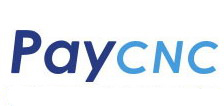How to proceed CNC retrofit?
Retrofitting a CNC machine involves updating or replacing its components to improve performance, precision, or add new features. Here’s a general step-by-step guide:
1. Assessment:
• Evaluate your current CNC machine’s condition, identifying outdated or malfunctioning components.
• Define your retrofit goals: whether it’s upgrading the controller, motors, adding new features, or improving accuracy.
2. Budgeting:
• Determine a budget for the retrofit project, including costs for new components, software, and potential professional assistance.
3. Research:
• Investigate and choose compatible CNC components based on your machine’s specifications and retrofit goals. Ensure compatibility with existing hardware.
4. Documentation:
• Create detailed documentation of your current CNC machine’s setup, including electrical schematics, mechanical drawings, and any custom modifications.
5. Backup:
• Back up any important data or settings from the existing CNC system to prevent data loss during the retrofit.
6. Disassembly:
• Carefully disassemble the CNC machine, keeping track of all the removed components and their connections.
7. Installation:
• Install the new components according to the manufacturer’s instructions. This may include a new controller, motors, drives, and other hardware.
8. Wiring:
• Reconfigure the wiring based on the new components. Follow the electrical schematics and make necessary adjustments.
9. Software Setup:
• Install and configure the new CNC control software. This may involve parameter settings, calibration, and testing.
10. Testing and Calibration:
• Test each axis and verify the machine’s accuracy. Calibrate the system to ensure precise movements and consistent performance.
11. Fine-Tuning:
• Fine-tune the CNC machine based on your specific requirements. Adjust settings for speed, acceleration, and any additional features.
12. Documentation Update:
• Update the documentation with the new retrofit information, including any changes made during the process.
13. Training:
• If necessary, provide training for operators on the new features and operation of the retrofitted CNC machine.
14. Maintenance Plan:
• Develop a maintenance plan to ensure the ongoing reliability and performance of the retrofitted CNC machine.
Remember, retrofitting can be a complex process, and seeking professional assistance or consulting with experts in CNC retrofitting may be beneficial, especially if you are not experienced in such projects.
1. Assessment:
• Evaluate your current CNC machine’s condition, identifying outdated or malfunctioning components.
• Define your retrofit goals: whether it’s upgrading the controller, motors, adding new features, or improving accuracy.
2. Budgeting:
• Determine a budget for the retrofit project, including costs for new components, software, and potential professional assistance.
3. Research:
• Investigate and choose compatible CNC components based on your machine’s specifications and retrofit goals. Ensure compatibility with existing hardware.
4. Documentation:
• Create detailed documentation of your current CNC machine’s setup, including electrical schematics, mechanical drawings, and any custom modifications.
5. Backup:
• Back up any important data or settings from the existing CNC system to prevent data loss during the retrofit.
6. Disassembly:
• Carefully disassemble the CNC machine, keeping track of all the removed components and their connections.
7. Installation:
• Install the new components according to the manufacturer’s instructions. This may include a new controller, motors, drives, and other hardware.
8. Wiring:
• Reconfigure the wiring based on the new components. Follow the electrical schematics and make necessary adjustments.
9. Software Setup:
• Install and configure the new CNC control software. This may involve parameter settings, calibration, and testing.
10. Testing and Calibration:
• Test each axis and verify the machine’s accuracy. Calibrate the system to ensure precise movements and consistent performance.
11. Fine-Tuning:
• Fine-tune the CNC machine based on your specific requirements. Adjust settings for speed, acceleration, and any additional features.
12. Documentation Update:
• Update the documentation with the new retrofit information, including any changes made during the process.
13. Training:
• If necessary, provide training for operators on the new features and operation of the retrofitted CNC machine.
14. Maintenance Plan:
• Develop a maintenance plan to ensure the ongoing reliability and performance of the retrofitted CNC machine.
Remember, retrofitting can be a complex process, and seeking professional assistance or consulting with experts in CNC retrofitting may be beneficial, especially if you are not experienced in such projects.
 USD
USD




